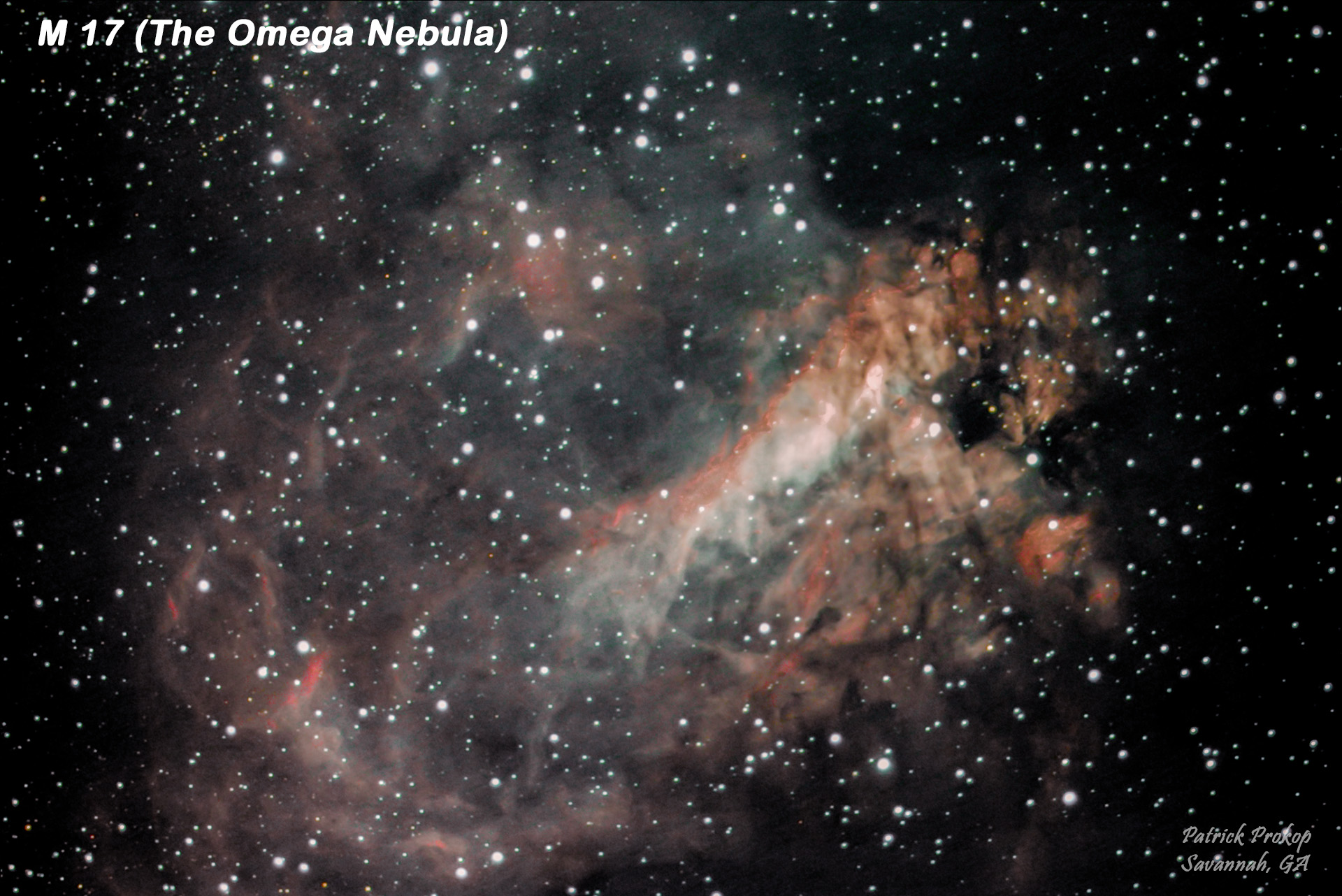
The Omega Nebula ... Messier 17
(Click on Picture for larger view)

Added July 19, 2019 ...
The Omega Nebula is a famous star-forming emission nebula and is between 5,000 and 6,000 light-years from Earth. It is located in the rich starfields of the Sagittarius area of the Milky Way. It is also known as the Swan Nebula, Lobster Nebula, Horseshoe Nebula and Checkmark Nebula. Embedded within it is an open cluster of at least 35 stars that provides the source of the glowing gas. All-in-all, there are hundreds of stars within the nebula which spans an area of 32 light-years across. This object is best viewed during the months of June, July and August medium high in the south at midnight.
The Milky Way in Sagittarius:
(Hover over the picture for definitions ... Click on it to enlarge)
I took this 15 minute wide view of the Milky Way with my Canon T7i piggy-backed atop the telescope. Here you can see the 'Milkiness' of the core of our galaxy. Within this region lies several 'Messier Objects' including M 17, also known as the Omega Nebula. Jupiter was off to the right and as you can see, it moved a bit toward the east (left).
The 'Techy Stuff' (For those who want to know)
Telescope: 11" Celestron EdgeHD
Reducer Lens: Celestron 0.7x for EdgeHD 11 (f/7)
Camera: Altair 'Hypercam 294c Pro tec' with the sensor temperature setting at 23°F
Filter: City Light-Pollution Suppression
Capture Software: SharpCap Pro
Settings: Binning 2x2 ... RGB / JPG files
Light Frames: 42 at 60 seconds
Dark and Bias Frames: 20 ea
Post Processing: PixInsight & Photoshop CC
Seeing conditions: 9 (based on 0-10 where 10 is crystal clear)
Outside Temperature: 74°F
Bortle Light Pollution index: 4.5 (Can barely see the Milky Way)
Location: My Backyard, Savannah, GA
Return to Pat Prokop's Heavenly Backyard Astronomy Page